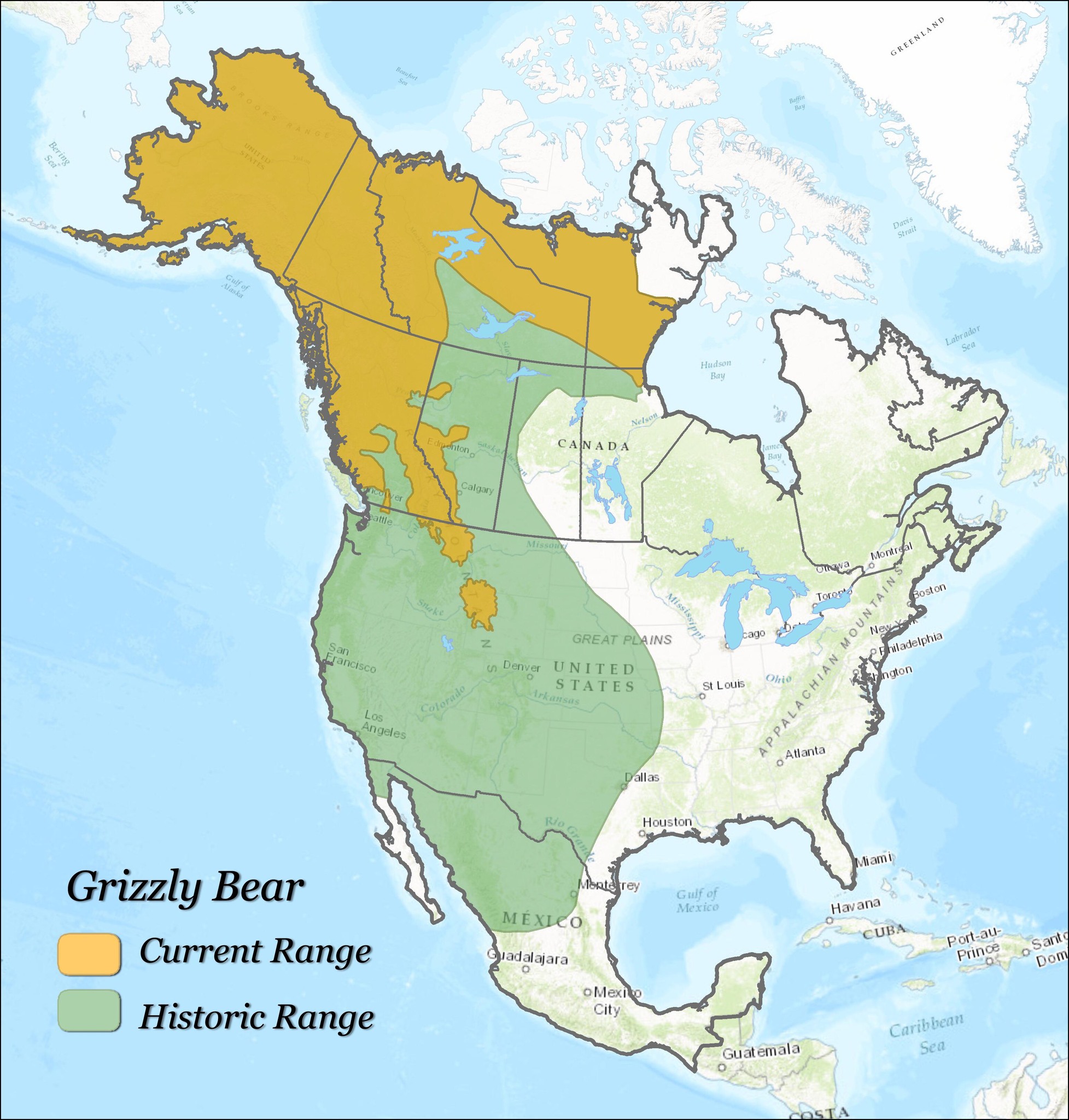Map by Lisa Landenburger / U.S. Geological Survey
Looking at this map, you can see one of the most dramatic wildlife stories in North American history.
The mighty grizzly bear once commanded an enormous territory stretching from Alaska to Mexico, from the Pacific Coast deep into the Great Plains. Today, these magnificent creatures cling to less than 2% of their historic range in the lower 48 states.
What Happened?
The decline wasn’t gradual or natural. As European settlers pushed westward in the 1800s, grizzlies were systematically eliminated. Ranchers viewed them as threats to livestock. Homesteaders feared them near settlements. Trophy hunters sought their massive skulls and pelts.
By 1922, California’s last known wild grizzly was killed, despite the bear’s iconic status on the state flag.
The pattern repeated across the American West. Montana, Wyoming, Idaho, and Washington once teemed with grizzlies. Now, the lower 48 states host fewer than 2,000 bears, concentrated mainly in and around Yellowstone and Glacier National Parks.
The Mexican grizzly was declared extinct by the 1960s.
Where They Survive
Alaska and Canada remain the grizzly’s stronghold. The vast wilderness of Alaska supports a healthy population of around 30,000 bears.
Western Canada’s forests, mountains, and tundra provide sanctuary for tens of thousands more. These northern territories offer what grizzlies need most: space, abundant food sources, and distance from dense human populations.
Why It Matters
Grizzly bears are what ecologists call an “umbrella species.” Protecting habitat large enough and wild enough for grizzlies automatically protects countless other species sharing that ecosystem. They’re also indicators of environmental health. Where grizzlies thrive, entire ecosystems tend to function properly.
Their disappearance from most of the continent represents more than losing a single species. It reflects the wholesale transformation of wilderness into farmland, cities, and managed forests. The green zones on this map represent not just absent bears, but fundamentally altered landscapes.
Signs of Hope
Conservation efforts have achieved some remarkable successes. Yellowstone’s grizzly population has rebounded from as few as 136 bears in 1975 to over 700 today. Similar recovery stories are unfolding in northwest Montana.
These victories required difficult compromises: protecting critical habitat, managing human access, working with ranchers on livestock protection, and strictly limiting hunting.
The Bigger Picture
This map tells us something profound about our relationship with wild places and wild creatures. The orange zone represents what remains when we prioritize nature. The green zone shows what we’ve claimed for ourselves. As human populations continue growing, the question becomes: can we share the continent with its original apex predators, or will future generations know grizzlies only in zoos and history books?
The answer depends on the choices we make today about land use, wildlife corridors, and how much wilderness we’re willing to preserve.
Help us out by sharing this map:
